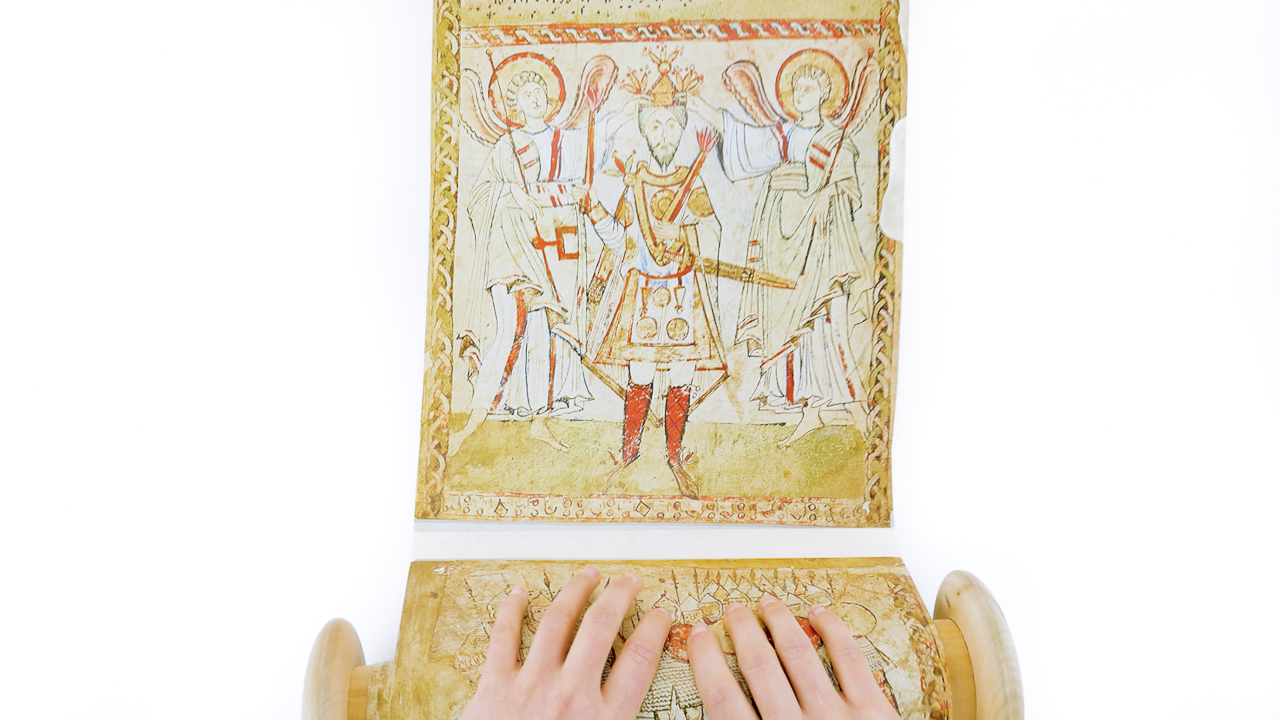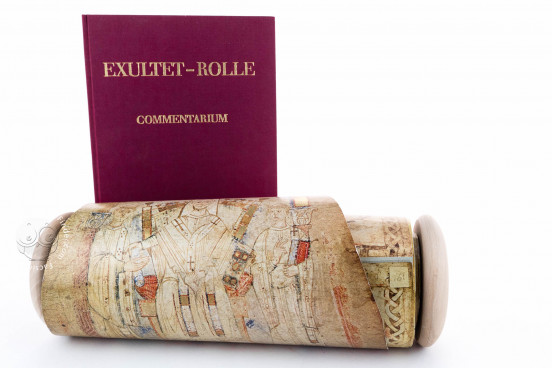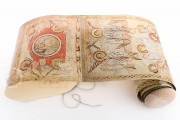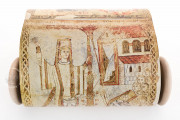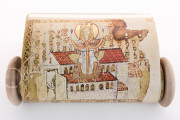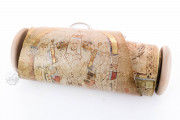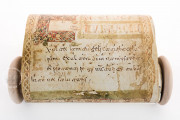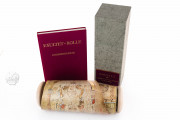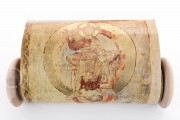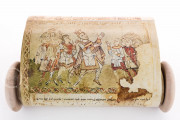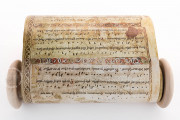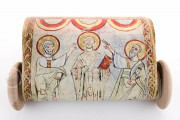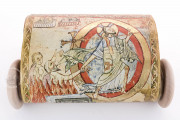The Vatican Exultet Roll is the earliest surviving Exultet roll, and it is justly considered one of Southern Italy's unique treasures. Dating back to the tenth century, in was crafted in the city of Benevento, an important cultural center during the Middle Ages. The scroll was designed for liturgical use on Easter Saturday and includes text, melody, and a pictorial cycle illustrating the song. Its highly stylistic illustrations attest to the creative and artistic skills of the so-called Beneventan school.
The Exultet Scroll and the Beneventan School
The artists of the school of Benevento exhibit an outstanding technique and creative eclecticism. Indeed, they applied decorative and iconographic elements from classical antiquity, Christian sources, implementing eastern and western ornamental motives.
Before the introduction of bound books, scrolls were the main literary support, at least until the fourth century when the codex slowly replaced it, with the exception of Christian literature in which the use of the codex was preferred right from the beginning.
The roll, however, was not completely forgotten for it was commonly used in Byzantium and in the Greek church with both of which Benevento had strong contacts politically and culturally.
A Detailed Decorative Apparatus
The content of the scroll features an exceptional decorative apparatus in the form of skillful and artistic pen drawings with several colors and shimmering gold. The illustrations show that the artist had great love for details and are surrounded by decorative frames, featuring motives such as arcades, palmettes, jewels and pearls, brightening the framing system.
The text is accompanied by the melody in the form of Neume annotation conveniently located above each line of the solemn text, so as to lead the clerical figure in the course of the song of praise.
Christian and Pagan Iconography
The images that accompany the text of the song in the Vatican Exultet Roll are represented in terms of the symbols and metaphors belonging to the tradition of early Christendom. The iconographic apparatus features representations of pagan rites, such as the association between the resurrection of Christ and the advent of new life on earth by virtue of Sol, the pagan God of the Sun.
The scroll exhibits representations honoring how nature celebrated the resurrection of Jesus, who, so as to embody the light he brings in the world, is depicted in a shimmering halo, echoing the light of salvation. Part of the illustrations of the Exultet Scroll deal with the lively and detailed representation of liturgical proceedings, playing an important role for its documentary value.
We have 1 facsimile edition of the manuscript "Vatican Exultet Roll": Exultet Rolle facsimile edition, published by Akademische Druck- u. Verlagsanstalt (ADEVA), 1974
Request Info / Price
